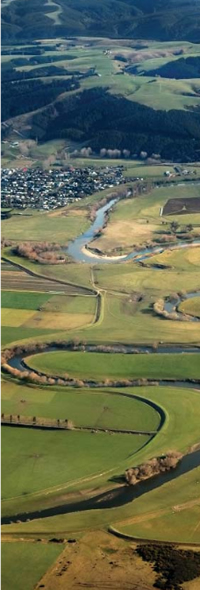Assessing impacts of environmental policy

Assessing the economic and physical impacts of environmental policy has long perplexed decision makers but a new tool from Landcare Research looks set to change that.
The New Zealand Forest and Agriculture Regional Model (NZ-FARM) was developed to allow central government agencies, regional councils and industry to systematically assess the economic and environmental impacts of environmental policy – including limits, allocation options, taxes and resource constraints such as water availability.
Researcher Suzie Greenhalgh says that the model can be used, for example, at catchment-level to simultaneously assess impacts on farm income from meeting different regional water quality limits and implementing the NZ Emissions Trading Scheme.
The model optimises potential farm income across a catchment against the environmental impacts of land use (pastoral, arable, horticultural, forestry, scrub or conservation) and land-use and management change. The model also includes soil and weather variability across the catchment.
“To enable the agricultural sector to respond to policy changes and resource constraints, farmers can change land use or adopt management practices with lower environmental impacts,” Dr Greenhalgh says.
“Lower-impact practices available to farmers currently include altering stocking rates and fertiliser regimes, applying nitrogen inhibitors, and using feedpads for dairy operations.”
Researcher Adam Daigneault says the model focuses on greenhouse gas and water environmental constraints, accounting for greenhouse gas emissions from agriculture and forestry, forest carbon sequestration, water use and water constraints, and nutrient (nitrogen and phosphorus) losses. The water quality impacts are modelled using OVERSEER®, an agricultural management tool that assists in examining nutrient use and movements within a farm to optimise production and environmental outcomes; while greenhouse gas emissions and carbon sequestration are based on the methods used to derive the annual national inventory of greenhouse gases.
“Over time more ecosystem services, environmental constraints and farm management options will be added to the model. Currently, water yield and pollination services are being incorporated,” Dr Daigneault says.
The model was developed for the Hurunui and Waiau catchments in Canterbury and the Manawatu River catchment in the North Island but is relatively straightforward to customise for other catchments. To date, NZ-FARM has been used to assess the benefits and impacts of:
- Potential increases in water storage from capital improvement projects such as water storage infrastructure,
- Proposed water quality caps or limits such as those on nitrogen and phosphorus loads, and the allocation of these limits within a catchment
- Mandatory good management practices for agriculture,
- Input and output taxes,
- Implementation of NZ-ETS on the forestry and agricultural sectors,
- Regional afforestation schemes,
- Implementation of new farm technology and good management practices,
- Increases in farm input costs and/or product prices, and
- Combinations of the above options.
